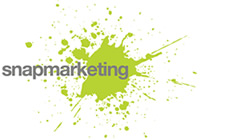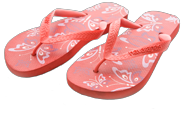LinkedIn – what’s not to like. It’s a social media platform for business professionals where you can connect with prospects and get lots of business – right?
Wrong, but watching the feed as I do on a daily basis, this seems to be the default status for a lot of business ’un-professionals’, and sadly I suspect their behaviour will force LinkedIn to make changes that will limit the flexibility and effectiveness of the platform for the rest of us.
Having discussed this issue with clients and colleagues, here are the 7 top behaviours that will really upset your contacts and make you look amateurish.
spammy activity and useless content
The best posts on LinkedIn by far are those that offer insight – they are the ones that get read and funnily enough they build trust and add to your reputation.
By all means be proud of your business achievements, but don’t make it all about you and your company – that’s not why people join Linkedin.
If you have a genuine success story, share it, it shows how good your company is, but add details as to why your contacts should click the link to find out more – offer genuine insight or innovation.
what – no website links?
You do have website links to add more detail to the story don’t you? Relentless self-promotion of your own projects and achievements is seen as even more ‘spammy’ if you haven’t bothered to link your LinkedIn post to say a relevant blog or case study on your website.
And you are missing out massively on both website traffic and SEO benefits. And sorry, linking to your home page is just as bad.
way too much activity
If you really want to post pictures of your business doing cool stuff every 5 minutes, use Instagram or Twitter. On LinkedIn though, your contacts will be impressed for a short while, you may even hear comments when you visit them like “gosh you seem to be everywhere these days – all I see is your stuff on Linkedin”. If you do hear this – take it as a warning because the cumulative effect of over-frequent activity comes across as “spammy.”
Everything you do on LinkedIn is displayed in your connections’ feed. Shares, comments, likes will all display as separate events in the feed, so if you over-egg your status, it really shows.
#hashtagfail – irrelevant use of hashtags
The hashtag was created so that posts on social media could be quickly labelled for other users to search on. Hashtags help identify hot, trending topics, but over-use and using irrelevant hashtags are worse than not using them at all. Unless you are Nike or Taylor Swift, your own brand hashtag is probably not going to cut it!
not everyone wants to know every time you change your profile
You should be reviewing and fine-tuning your profile all the time. However, when you do make a change to your profile page, this appears in your contacts’ feed – do they really need to know you’ve changed your picture?
The LinkedIn interface actually allows you to adjust your activity settings – it’s a great feature to ensure that only the most relevant content is seen by your contacts.
inappropriate sharing and spammy commenting
FACT – LinkedIn is a business platform.
Its not Facebook and is not the place for boasting about drinking prowess, or the sort of jokey stuff that should stay on Facebook. LinkedIn is all about business insight and sharing of relevant experience that is related to professional or industry verticals.
Useful articles on industry issues and or relevant discussions will build your reputation and help you gain credibility. The occasional inspirational quote works, especially if you can relate it to something you’ve just written about.
Similarly, gratuitous praise added to your own team’s posts come over as self-indulgent and amateurish, and show that actually you haven’t really got anything important insightful to say yourself.
For example “Interesting project; we had to develop a new interface in collaboration with (the clients) IT team in order to integrate our platform securely to their network and enable enhanced dashboard functionality.” and a link to a case study, works a lot better than “Great job guys!”
connecting and selling stuff straight away.
We get asked by clients if they should connect with strangers on LinkedIn. Our advice is that all connections are good if they are relevant. We suggest that if someone has given you their business card, its almost expected that they will receive a LinkedIn invitation.
So do you accept invites from strangers? Yes if there is potential value in the connection – but both ways. No if there is not.
And absolutely nothing upsets potential connections more than being sold to either in your initial approach to them or the instant they accept your connection request.
Yes, we all need a bit of foreplay first!
Check out our other blogs on marketing yourself on LinkedIn









